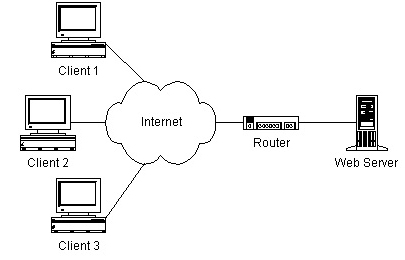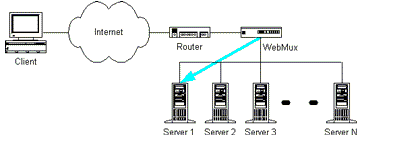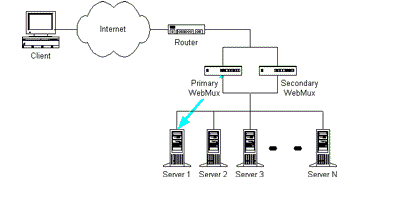|
Setup
- A simple web server setup consists of a router and a web server
like the figure below.

When the server is overloaded, the response will be very slow and if
the web server is down for any reason, the entire web site becomes
unavailable.
- The solution is to use a WebMux™ setup as shown by the animated
figure below. A WebMux is controlling a group of web servers called a web
array or web farm. To the outside world the entire web farm acts as one
web server.

Operation
- During normal operation, WebMux directs the web access load according to the
configurations.
- If one of the web servers within the farm is down for any reason,
WebMux will bypass the failed server and page the operator. The
load will be shared with the remaining servers. As long as at least
one server within the farm is up and running, the web site is operational
to the outside world.
- When the failed server is recovered, WebMux detects its presence
automatically. It will share the workload again with the rest
of the farm.
A Secondary WebMux
- The figure below shows a configuration of two WebMuxes.

- One of the WebMuxes is setup as primary and the other secondary. During
normal operation, the primary is directing the web request traffic.
- The secondary checks the primary periodically. If the primary goes
down and does not respond, the secondary takes over.
- Even after the fail over, the secondary continues to check the primary.
Should the primary recover, the secondary relinquishes control back to
the primary.
|